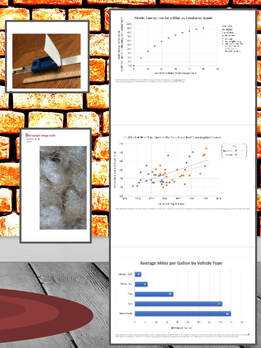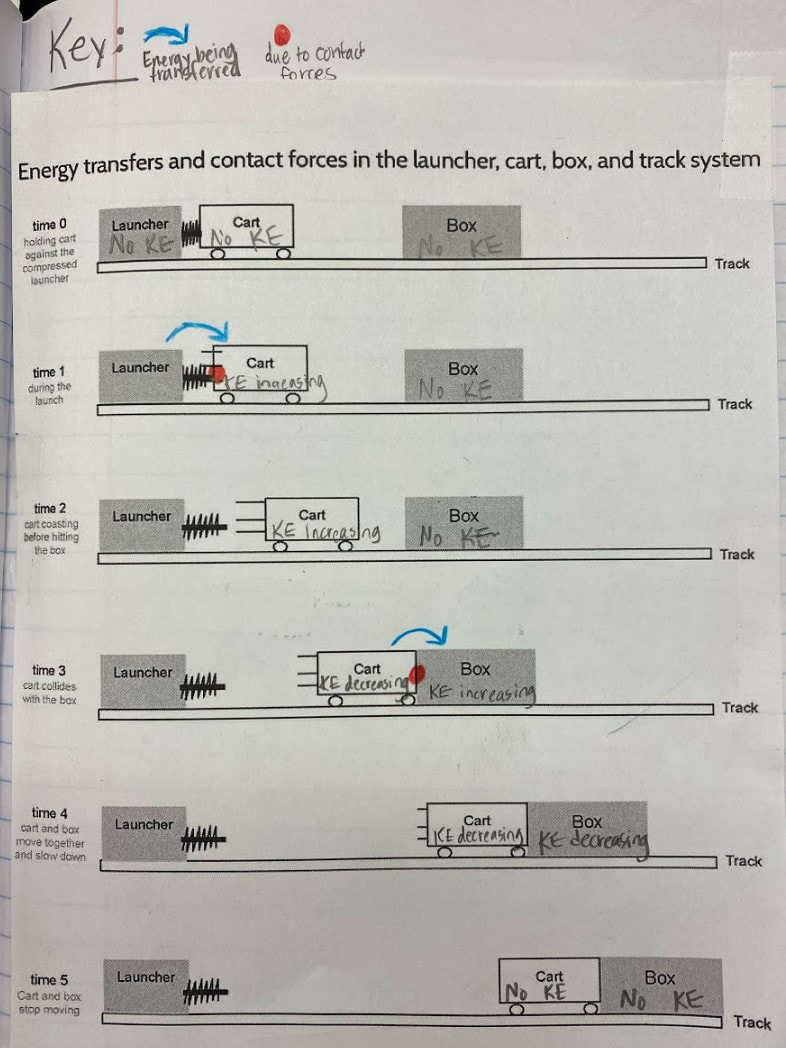| Knowing that both mass and speed impact what happens in a collision also meant we needed to see where all the energy was going in a system. Completing various investigations, students see how energy is transferred to both the air and the surface they travel on. They compared investigations with and without added sails to carts, investigations with and without head and tail winds, and looked at various surfaces up close. They even compared and analyzed data from real sources when comparing air resistance and friction. |
We are seeing through all these investigations that the surface impacts the amount of energy transfer. Bumpier surfaces allow more energy to transfer to them. When energy is transferred to a surface because two object rub against each other, this is friction! And when energy transfers to the air because the object transfers energy to the molecules/particles in the air, this is air resistance.
We're feeling fairly confident that if we change various variables to increase air resistance and slow energy transfer in a system, we can possibly reduce peak forces and prevent damage. But which materials would work best to do this? Why do some materials work better than others?


 RSS Feed
RSS Feed